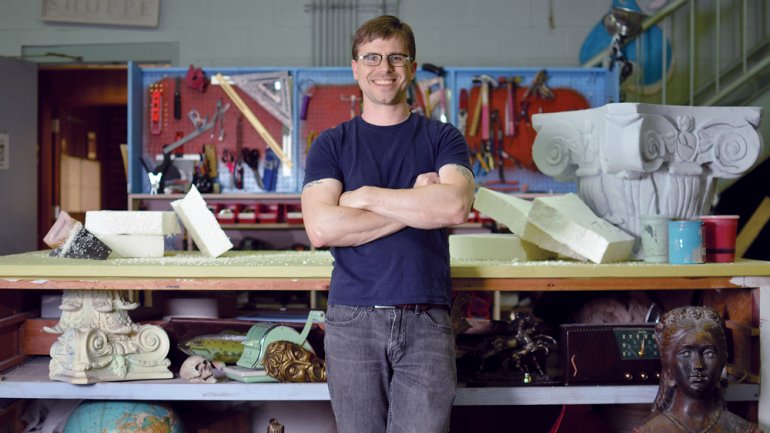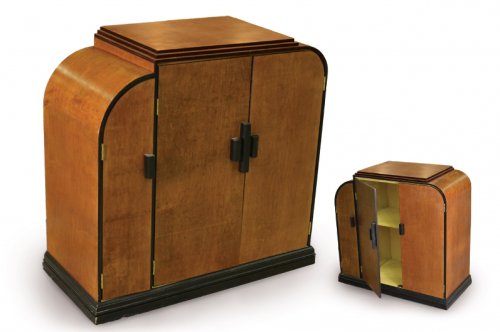The Art of Artifice
The Art of Artifice
For the past six years, I’ve worked as the props master for Triad Stage in Greensboro, North Carolina. Even if you’ve never heard of the job, you’ve almost certainly seen the craft in practice. I construct, modify, or purchase props for plays, following the direction of the scenic designer, who specifies how the pieces should look, and the director, who indicates their purpose. In short, I create or acquire all the objects the actors interact with – as small as a drinking glass or as large as a sofa.
Every production comes with its own challenges and opportunities. Last fall, Triad put on And Then There Were None, based on Agatha Christie’s 1939 novel; it was directed by Preston Lane, with a set designed by Robin Vest, both of whom I’ve worked with many times. The play unfolds in an English home in the 1930s, and Robin provided me with research imagery. It was to be a world of British art deco, with muted pastel colors and curved wooden veneers.
The play’s characters drink continually and copiously, so we needed a distinctive liquor cabinet to help establish the time, place, and style of the room. I could not find a suitable cabinet to buy, so I decided to build one. Robin and I went through her research images and found one that fit our aesthetic needs and that I could reasonably – and quickly, over about three weeks – replicate. I went to work.
I began by drafting a 3D model in design software SketchUp. Because theatrical furniture construction has tight deadlines, it helps to minimize the amount of real joinery needed. I use pocket-hole screws and pneumatic staples as opposed to more permanent hardware. With proper planning, I can hide the seams and holes created by fasteners.
The bar was essentially two cabinets joined together, except the top and side of each half, which were formed with curved maple plywood. To make the plywood flexible while keeping its outer surface smooth, I made a number of evenly spaced non-through cuts on its underside. The back panels and door jamb hold the curves in place.
I painted the interior a lovely yellow that often appeared in my art deco research. I then covered the inside walls and top with a reflective sheet of Mylar. Besides accentuating the appearance, this sheet also masked the cuts in the plywood. On top, I added two small panels in a distinctive deco style; the handles were simple rectangles fabricated from construction lumber. I filled and painted the plywood edges black and stained the wood, fittingly, with an English chestnut tone. The final touch was to seal everything with two coats of amber shellac.
Theater is illusion; the trick of the actors is to make the audience forget that they aren’t the characters they inhabit. My work is similar. The audience at And Then There Were None sat very close to the set, and patrons walked along the edge of the space to get to their seats, even brushing by the props. The smallest details had to stand up to scrutiny. Even up close, this liquor cabinet appeared to be a genuine antique rather than a prop.





